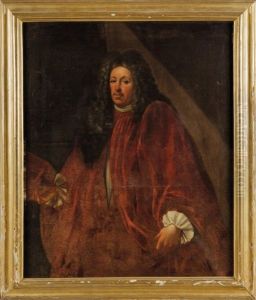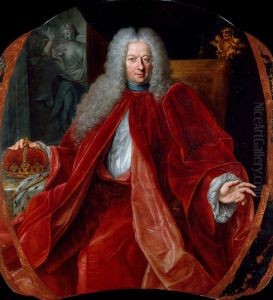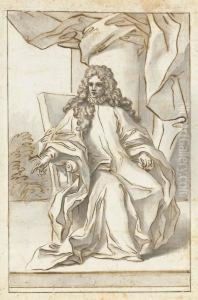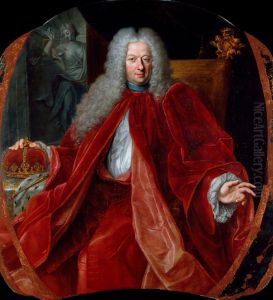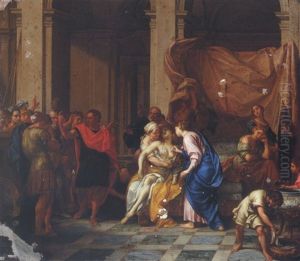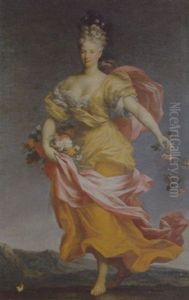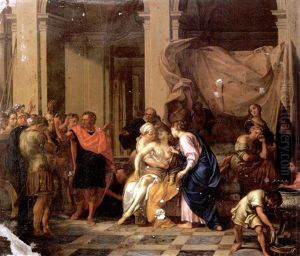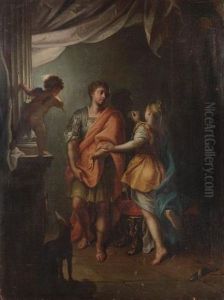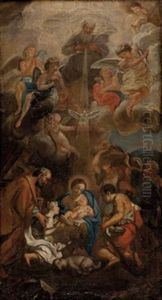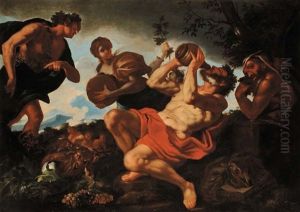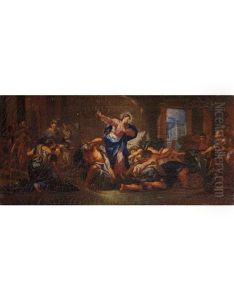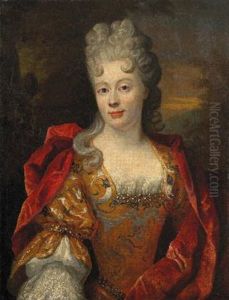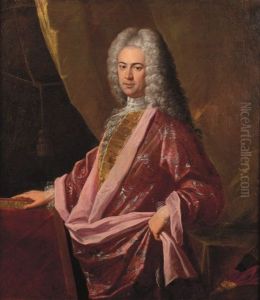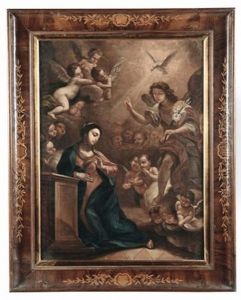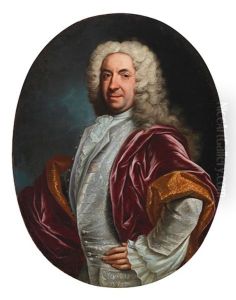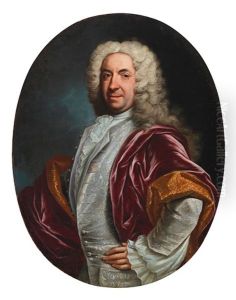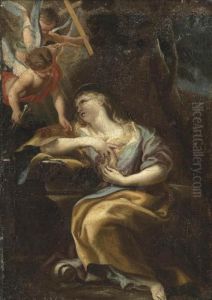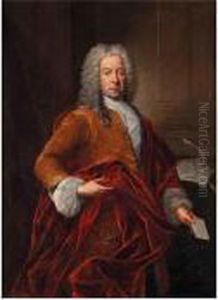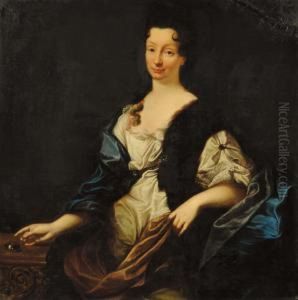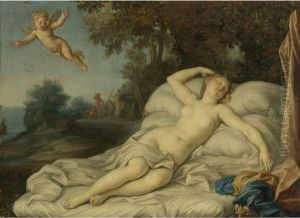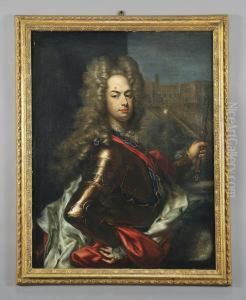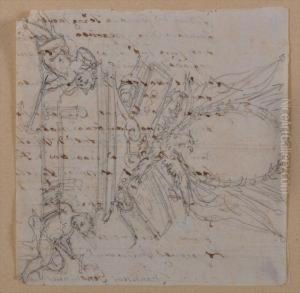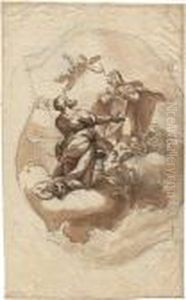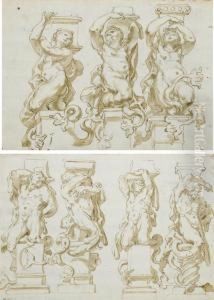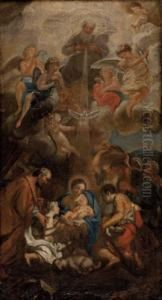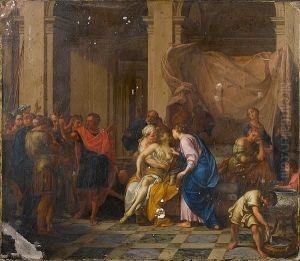Domenico Parodi Paintings
Domenico Parodi was an Italian painter, draftsman, and designer active during the Baroque period. Born in Genoa in 1672, he was the son of the acclaimed painter Giovanni Battista Parodi and the brother of another painter, Gerolamo Parodi. Domenico initially trained under his father and was highly influenced by his father's artistic style, which was characterized by dramatic use of light and shadow, as well as dynamic compositions.
Parodi's career was predominantly based in his native Genoa, where he contributed to the flourishing Baroque artistic scene. His works often included frescoes and large-scale decorative schemes for churches and palaces, where he showcased his skill in creating illusionistic ceiling paintings, a technique known as quadratura. These paintings typically featured elaborate architectural perspectives designed to deceive the viewer's eye and create the impression of a three-dimensional space on a flat surface.
Although not as widely known as some of his contemporaries, Parodi's work was esteemed in his time, and he received commissions from prominent families and religious institutions. He is known to have collaborated with other artists, including the stuccoist and architect Giacomo Antonio Corbellini. Together, they produced ornate and harmonious designs that integrated painting, stucco, and architecture.
Domenico Parodi's art represents a transitional phase between the high Baroque style and the emerging Rococo movement, which favored lighter themes, graceful lines, and a more playful and whimsical approach to decoration. His legacy includes contributions to important Genoese landmarks such as the Palazzo Rosso and the Church of Santa Maria Assunta di Carignano.
Parodi died in Genoa in 1742. His works remain an integral part of Genoa's artistic heritage and can be seen in various churches and palaces throughout the city. As a figure in Baroque art, Parodi's influence may not have spread far beyond his hometown, but his mastery of fresco and decorative arts left a lasting impression on the Ligurian tradition of painting.
